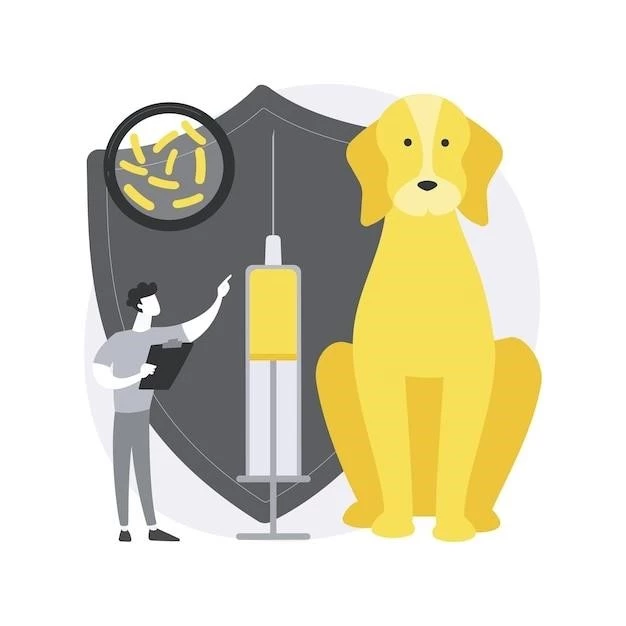Article Plan⁚ Disease⁚ Rabies
Introduction to Rabies
Rabies is caused by a neurotropic virus that affects animals and humans through saliva transmission. It is essential to understand the impact and history of this ancient disease, dating back to 4000 years ago. The virus can lead to fatal encephalitis and has a wide host range, affecting various mammalian species. Awareness of this preventable yet deadly disease is crucial to prevent the spread and save lives.
History and Impact of Rabies

Rabies has a long history, dating back thousands of years, with fatal consequences for both animals and humans. With its impact on public health, causing up to 70,000 human deaths annually worldwide, rabies remains a significant concern. Understanding the historical context and the devastating effects of this viral infection is crucial in implementing effective prevention and control measures.
Transmission of Rabies
Rabies is primarily transmitted through the bite or scratch of an infected animal, with dog bites being the most common source of human rabies infections. The rabies virus typically travels to the central nervous system, leading to severe neurological symptoms. Identifying and promptly treating potential exposures to rabies is crucial in preventing the spread of this deadly disease.
Symptoms and Forms of Rabies
Rabies presents with symptoms that progress rapidly, including fever, pain, and neurological manifestations. Typically, the disease manifests in two forms⁚ furious rabies, characterized by hyperactivity and aggression, and paralytic rabies, characterized by muscle weakness and eventual paralysis. Understanding these different forms and recognizing early symptoms is vital for timely intervention and management.
Diagnosis of Rabies in Animals
Diagnosing rabies in animals usually involves conducting a direct fluorescent antibody (DFA) test on brain tissue samples. This test aims to identify the presence of rabies virus antigens. It’s essential to promptly detect and confirm cases of rabies in animals to prevent further transmission of the virus to humans and other animals. Consult a veterinarian if you suspect rabies in an animal.
Diagnosis of Rabies in Humans
Diagnosing rabies in humans involves a series of tests, including examining symptoms, medical history, and potential exposure to infected animals. Laboratory tests may include viral isolation from saliva or tissue samples, antibody detection, or PCR testing for viral RNA; It is crucial to seek medical attention immediately if you suspect exposure to rabies to receive appropriate diagnosis and treatment.
Treatment and Prevention of Rabies
Preventing rabies through vaccination is crucial, especially after exposure to an infected animal. Post-exposure prophylaxis involves a series of rabies vaccine doses and, in some cases, rabies immunoglobulin. Prompt medical attention is vital to prevent the onset of symptoms and progression of the disease. Additionally, raising awareness about rabies transmission and ensuring pet vaccinations are in place are effective preventive measures.
Vaccination Recommendations
Vaccination against rabies is essential to prevent the spread of this deadly viral disease, especially in regions where rabies is prevalent. The Centers for Disease Control and Prevention (CDC) recommends timely rabies vaccinations for individuals at risk of exposure, such as animal handlers, veterinarians, and travelers to endemic areas. Consult healthcare providers for personalized vaccination recommendations based on individual risk factors.
Pathophysiology of Rabies Virus
Rabies virus, also known as Rabies lyssavirus, is a neurotropic virus that causes the deadly disease in animals and humans. The virus spreads through saliva, with a wide host range among mammalian species. Understanding the pathophysiology of rabies virus, its neurological impact, and transmission dynamics is vital in developing effective control strategies and treatment protocols.
Incubation Period of Rabies
The incubation period of rabies varies but typically lasts from 3 to 12 weeks after exposure to the virus. During this phase, the virus travels along nerves to the brain. Infected individuals may not initially show signs of illness, making early detection challenging. Understanding the incubation period is crucial for prompt medical intervention and post-exposure prophylaxis.
Types of Rabies Vaccines
There are two primary types of rabies vaccines⁚ inactivated and live, weakened virus vaccines. These vaccines are crucial in preventing rabies transmission through animal bites. Inactivated vaccines are commonly used for post-exposure prophylaxis, while live, weakened virus vaccines may be administered before potential exposure. Consult healthcare professionals for guidance on the most suitable vaccine based on individual risk factors.
Global Impact and Statistics on Rabies

Rabies is a preventable yet deadly viral disease that has a significant global impact, with nearly 60,000 human deaths annually worldwide. The virus causes viral encephalitis, leading to fatal consequences if left untreated. Implementing vaccination programs, raising awareness, and ensuring access to post-exposure prophylaxis are crucial steps in reducing the burden of rabies on both human and animal populations.
Public Health Measures for Rabies Control
Implementing effective public health measures is crucial for controlling the spread of rabies. This includes vaccination campaigns for both animals and humans, especially in high-risk areas. Education on avoiding animal bites, prompt wound care, and seeking medical attention after potential exposure are essential components of rabies control. Collaborate with local health authorities to enhance awareness and prevention efforts in your community.
Recent Cases of Rabies and Awareness Campaigns
Recent cases of rabies highlight the ongoing threat posed by this deadly viral disease. With nearly 60,000 deaths globally each year, awareness campaigns play a crucial role in educating communities about the risks of rabies transmission and the importance of vaccination. Stay informed about rabies prevention strategies and seek immediate medical attention after any potential exposure to infected animals.
